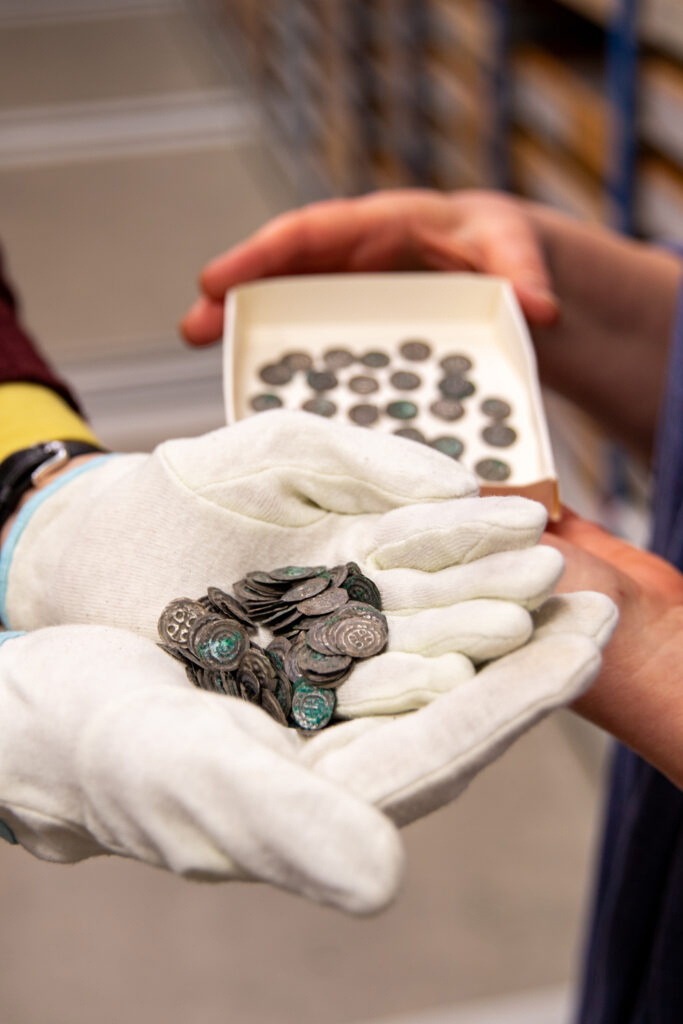13 May 2024
|
Archaeologists from the Jönköping County Museum in Sweden have made a unique find of 170 silver coins in a grave in Brahekyrkan on the island of Visingsö. An initial assessment shows that the coins date from the middle of the 12th century.
Excavations uncover 12th century coins
A total of 170 so-called silver bracteates (only minted on one side), estimated to be from around 1150 to 1180, were found in the grave of a man aged around 20-25. This coin discovery is very special, partly because there have been few similar finds from the time period and partly because some of the coins found are completely unknown.
Eva Jonsson of the Royal Coin Cabinet said: ‘It is a completely sensational find that will change the early medieval coin history in Götaland and shed light on a period that is largely completely unknown.’
Related article: Rare silver penny sells for £24,000

Above: Some of the bracteates found during excavations under a church on the Swedish island of Visingsö, Sweden
Work beneath a church uncovers more than coins
Excavation monitoring was to be carried out by the county museum’s archaeologists, Kristina Jansson and Anna Ödeén, in connection with the installation of geothermal heating in Brahe Church.
On the first day of excavations, two skeletons were found in the shaft where the wires were supposed to be laid. Whilst the skeletons were being excavated, three silver coins appeared. It soon became clear that many more coins were lying close to the left foot of one of the skeletons, which is estimated to be a man aged between 20 – 25.
It is rare that finds are made in Christian graves and it is unknown why all these coins would be in a grave with a man in his 20s. It is hoped that more clues will be found as work continues.
As well as silver coins, the excavation also uncovered another 24 graves and more than 20 hearths (or prehistoric fireplaces). Hearths have been discovered on the same site and those uncovered in 2024 appear to be of the same type as those discovered during a 2005 survey but have not yet been dated.







